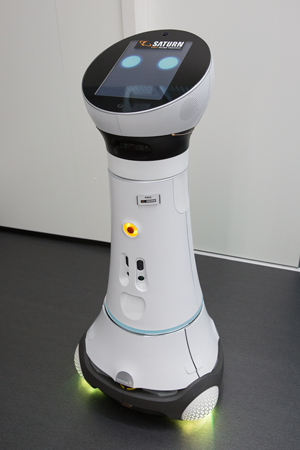This year’s digital marketing exhibition “dmexco” (digital marketing exposition and conference) in Cologne counted fewer visitors than in the last year, but the professional quality increased. With 1,100 exhibitors and 570 international speakers, including Sheryl Sandberg, the COO of Facebook, this years dmexco stayed true to its “Pure Business” motto. The decline in the number of visitors from 50,700 (2016) to 40,700 is primarily attributable to the fact, that tickets were not free for the first time. As one of the exhibitors, artegic AG was present and reports on one of the much-discussed trend themes: Integrating technology into the workplace.
At the dmexco 2017, there were many lectures that discussed how it is possible to integrate the technologies emerging in the context of digitization into the workplace environment. How does it affect the work of people and what changes with them? It was not just about robots or artificial intelligence but also about what Germany needs in order to become a pioneer in new developments.
The working world of tomorrow: man and machine
One example, which shows the dimensions of cooperation between machines and humans, is Robot Paul. At the MediaMarktSaturn Retail Group, the electronic assistant Paul is currently being used as a test at the retail shop in Ingolstadt to investigate the reactions of the customers and also the cooperation with the employees. In the talk “Human Touch: Men and Machine Transforming for the Better”, Sonja Moosburger, Head of Digital Transformation & Projects at the MediaMarktSaturn Retail Group, gave some tips for projects that combine technology and people in the business world. Firstly, electronic assistants should focus on routine activities, and it must be clear from the outset how they behave towards humans. It is also important to figure out what kind of cooperation really makes sense for the customers and furthermore you have to accept if some of them are not interested to get in touch with the technology. Interpersonal communication is a sensitive issue and important to our social cohesion, but with Paul it seems to work well. When he is away for maintenance his colleagues tell the customers that Paul is sick. A first step to involve robots in social processes.
Training to keep up with the technical developments
Always new technologies emerge and more and more tasks that can be taken over by machines. Collecting data, analyzing it, making decisions and learning, all of these human tasks can be done by Artificial Intelligence (AI) these days, and that even faster and more accurate than human beings can do it. The algorithms evaluate the data and then decide which action they want to trigger according to their analysis – and of course, the algorithms learn. Therefore, Artificial Intelligence is particularly suitable for marketing automation. People need to be quick to keep up with the latest trends and technologies. Particularly in the labour world of tomorrow, it plays a decisive role in maintaining sufficient professional competence. To wait for the knowledge of the new generation will not be enough. Further training for the existing workforce is essential, even in a wider social context.
A second Silicon Valley in Germany
In the lecture “Future Views from the Valley”, Margit Wennmachers, born in Aachen, living in the US and partner at Andreessen Horrowitz shared some of her impressions about the digital future.
Presented by the press as Queen of the Silicon Valley, Wennmachers had a list of “magical ingredients” that we would need for a second Silicon Valley in Germany. According to Wennmachers, it is important to understand the system of Silicon Valley. This already starts with the universities, which are different in the US in their basic attitude. They encourage and support young talents if they have an idea for a new product or company. In addition, investors in the US are more varied, more specialized and more numerous. For development there is the need for a huge talent base, and the Silicon Valley understands how to attract and keep it – and that is not just California sunshine. In Germany, 70 per cent of employees are lowly committed to the company and only do what they noeed to (Gallup). As the last important point, Wennmachers pointed out that the trial&error culture in the United States is different. In Germany, the pressure to succeed is much higher, although the risk is the same. Errors are more likely to be associated with failure, in the US errors are a natural part of the process. For young entrepreneurs in Germany, Wennmachers recommends to adopt a sector that is difficult to implement in the US because otherwise it will be hard to top them.
Here, too, it became clear that continuing education and extensive knowledge about digital topics and technologies are indispensable for our future labor market.

